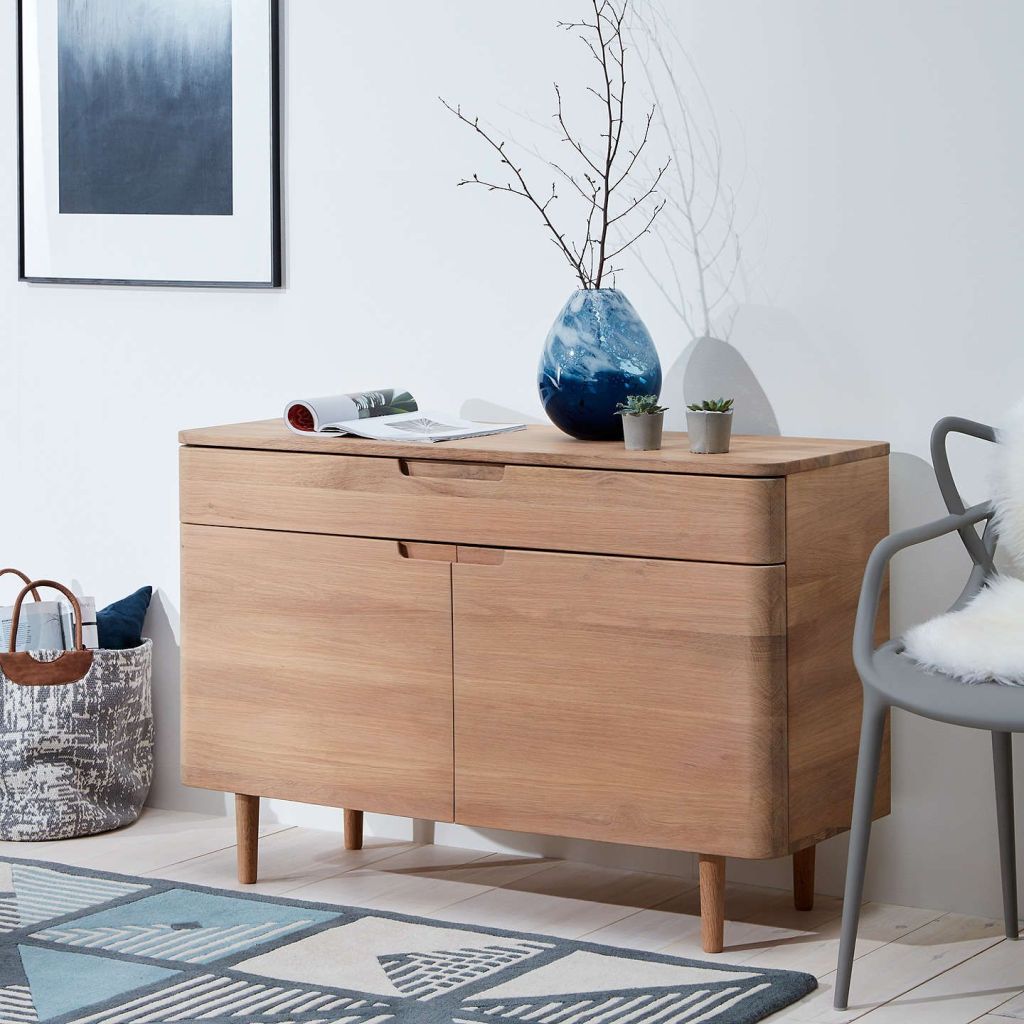
Early Life and Education
Peder Moos, born in 1906 in Tønder, Denmark, was a Danish furniture designer renowned for his meticulous craftsmanship and innovative designs. Raised as the son of a farmer, Moos’s early life was grounded in rural Denmark’s practical and artisanal traditions. He attended Askov Højskole, a folk high school, where his interest in woodworking began to take shape. Following his early education, Moos trained as a cabinetmaker in Jutland and later in Copenhagen, honing his skills and setting the stage for his future career in furniture design.
Career Beginnings and Parisian Influence
From 1926 to 1929, Moos worked in Paris, Geneva, and Lausanne, where he was exposed to various European design philosophies and techniques. This period was crucial in shaping his unique style, which blended the organic aesthetics of Art Nouveau with the functionalist principles of Scandinavian design. Upon returning to Denmark, Moos established his workshop in Bredgade, Copenhagen, in 1935, where he would work for the next two decades.

Innovative Techniques and Unique Style
Moos’s approach to furniture design was characterized by his deep respect for the materials he used and his commitment to craftsmanship. He selected the wood for each piece, often crafting the furniture before drafting any plans. This artisanal method ensured that each creation was unique, marked by an elegance and delicacy reminiscent of Art Nouveau but with a refined Scandinavian sensibility.
One of Moos’s notable techniques was his use of dowels and wedges instead of nails and screws, creating intricate joinery that added both structural integrity and visual appeal to his pieces. He meticulously sanded his furniture multiple times, using very fine sandpaper and washing the pieces between each sanding to achieve an exceptionally smooth finish.

Iconic Works and Legacy
Moos’s oeuvre includes around 30 to 40 pieces, each distinct and highly prized by collectors. His designs, such as the coffee table 1943 and the teak wall shelf from the 1950s, exemplify his commitment to functional artistry. Among his most famous works is the “Museum Table,” a coffee table made of solid Brazilian rosewood with boxwood inlays, which has been exhibited in prestigious venues such as the Designmuseum Danmark and the Nationalmuseum in Stockholm.
Despite his limited output, Moos’s furniture commands high prices at auctions. In 2005, a table with silver rivets sold for a record DKK 445,000; in 2015, a dining table fetched 6 million DKK. His pieces are considered masterpieces of mid-20th-century Scandinavian design, celebrated for their craftsmanship and aesthetic purity.
Teaching and Later Years
In 1956, Moos moved to Funen, where he taught at the School of Crafts (Den danske Husflidshøjskole) in Kerteminde. In 1962, he opened a workshop in Bredebro in the south of Jutland. His work continued to receive recognition, with exhibitions in Stockholm, The Hague, and New York’s MoMA.
The Art of Functional Design
Moos’s dedication to functional design is evident in his approach to pricing. He famously told customers, “If we have to think about price, the result will not be as good as it could be. We’ll see how it works out. If you think it is too expensive, I’ll hold on to the furniture and sell it to someone else.” This philosophy underscored his belief in the intrinsic value of well-crafted furniture, independent of market pressures.
Conclusion
Peder Moos remains a significant figure in Danish furniture design. His work inspires contemporary designers who value functionality and artistic expression. Moos’s legacy is a testament to the enduring appeal of meticulously crafted, beautifully designed furniture.
Sources
Anon. (2016). The Architecture of Denmark. (n.p.): Read Books Limited.
Artnet. (n.d.). Peder Moos. Retrieved May 26, 2024, from https://www.artnet.com/artists/peder-moos/
Bruun Rasmussen Auctioneers. (n.d.). Peder Moos – The most expensive piece of Danish design. Retrieved May 26, 2024, from https://bruun-rasmussen.dk/m/news/160906_2.html
Bruun Rasmussen Auctioneers. (2016, November 15). Peder Moos: Museum table and private letters up for auction. Retrieved May 26, 2024, from https://www.mynewsdesk.com/bruun-rasmussen-auctioneers/pressreleases/peder-moos-museum-table-and-private-letters-up-for-auction-1722600
Krenov, J. (1976). A Cabinetmaker’s Notebook. United Kingdom: Van Nostrand Reinhold Company.
Wikipedia contributors. (2022, January 21). Peder Moos. In Wikipedia, The Free Encyclopedia. Retrieved 23:54, July 19, 2022, from https://en.wikipedia.org/w/index.php?title=Peder_Moos&oldid=1067143259
Zahle, E. (1963). Scandinavian domestic design. London: Methuen
More Design articles
More Danish Furniture Designers
Discover more from Encyclopedia of Design
Subscribe to get the latest posts sent to your email.





